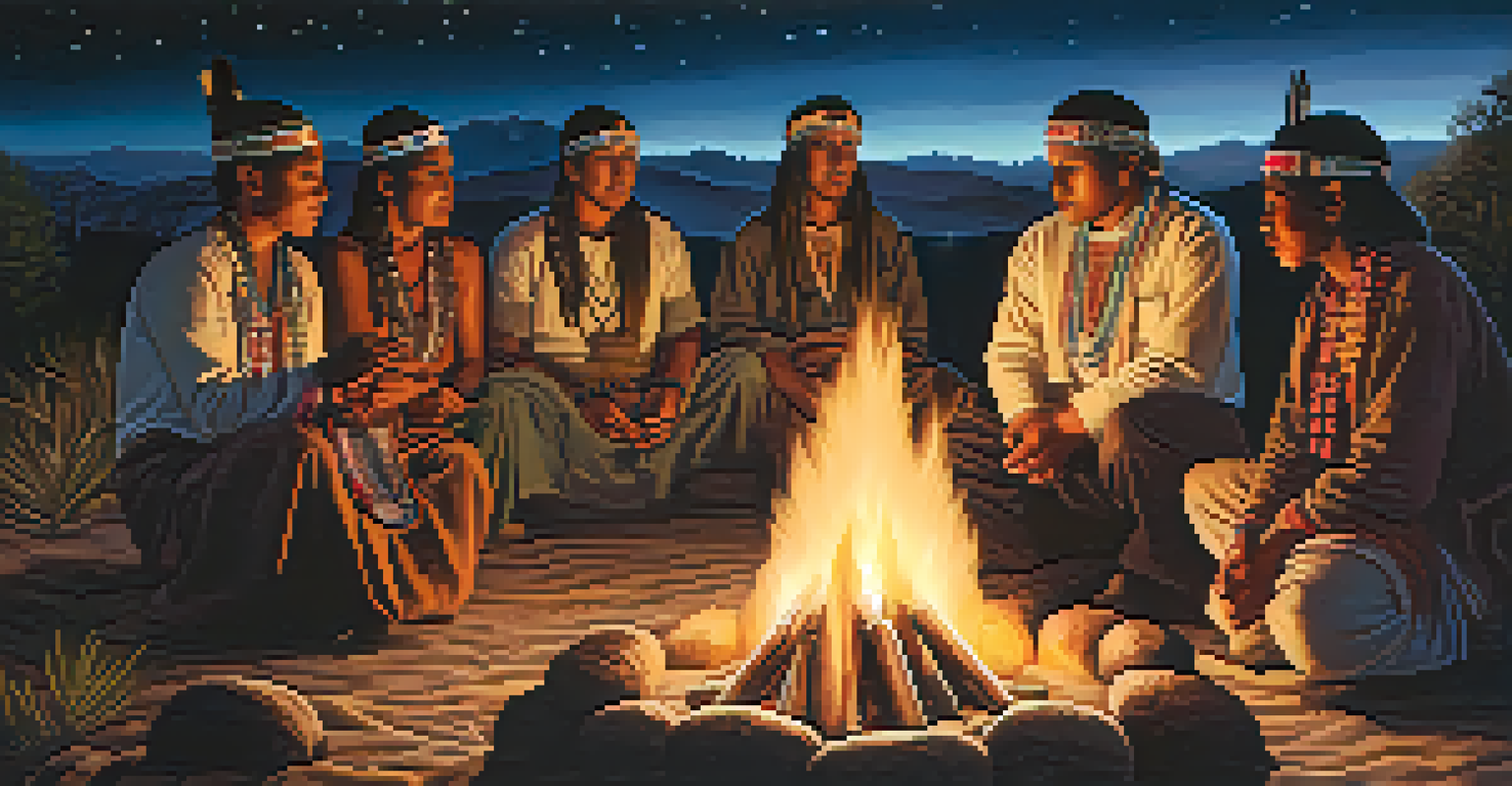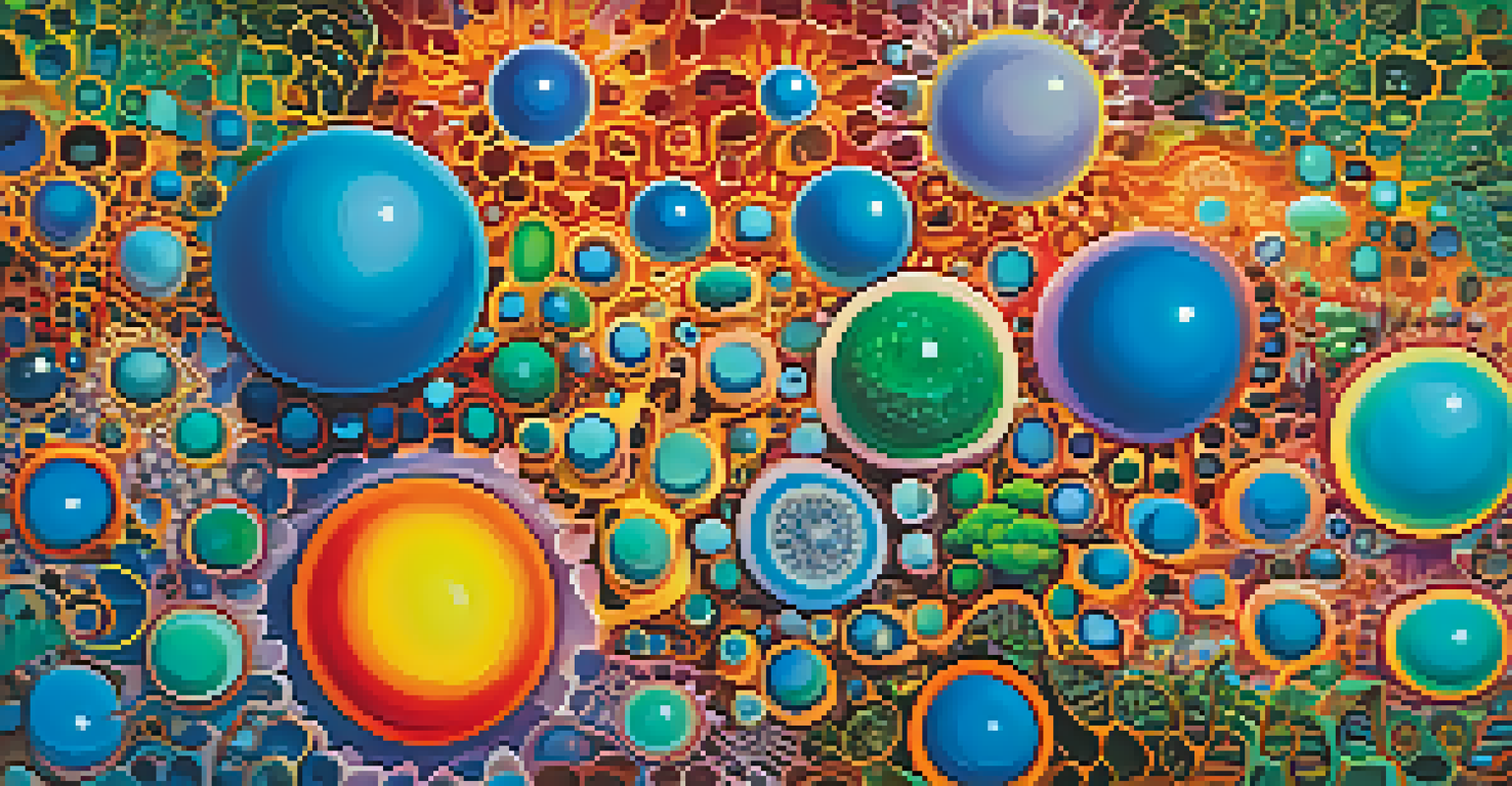Cultural Perspectives: Peyote and the Concept of Suffering

Understanding Peyote and Its Cultural Importance
Peyote, a small cactus native to Mexico and the southwestern U.S., has been used for centuries in various cultural and spiritual practices. Indigenous peoples regard it as a sacred plant that offers profound insights and connections to the spiritual world. Through its psychoactive properties, peyote facilitates experiences that are deeply rooted in cultural significance, often tied to rituals and healing ceremonies.
Psychoactive plants have been used by indigenous peoples for centuries as a means of healing and connecting with the spiritual world.
For many Native American communities, peyote is more than just a plant; it is a key component of their identity and spirituality. It is used in religious ceremonies, such as the Native American Church, where members gather to consume peyote to seek guidance, healing, and a sense of community. This cultural perspective highlights the reverence with which peyote is regarded, framing it as a tool for both personal and collective transformation.
Understanding the cultural importance of peyote helps shed light on its role in addressing suffering. It is often seen as a pathway to healing, allowing individuals to confront their pain and struggles in a safe, supportive environment. By exploring these cultural practices, we can better appreciate the interconnectedness of spirituality, healing, and the concept of suffering.
The Concept of Suffering in Indigenous Cultures
Suffering is a universal experience, but its interpretation varies significantly across cultures. In many Indigenous cultures, suffering is not merely a negative experience; it can be viewed as a catalyst for growth, transformation, and deeper understanding. This perspective encourages individuals to embrace their pain rather than shy away from it, fostering a sense of resilience and community support.

In the context of peyote use, suffering often becomes a focal point during ceremonies. Participants may confront personal traumas, emotional pain, or existential questions while under the influence of the cactus. This confrontation is seen as an opportunity for healing, allowing individuals to process their suffering in a sacred space surrounded by others who understand their journey.
Cultural Importance of Peyote
Peyote is recognized as a sacred plant by Indigenous peoples, integral to their spiritual practices and communal healing rituals.
By reframing suffering as a potential teacher, Indigenous cultures promote a more holistic approach to mental and emotional well-being. This perspective not only validates the experience of suffering but also emphasizes the importance of community and spiritual practices in overcoming it. The integration of peyote into these practices exemplifies how cultural beliefs shape the understanding and management of suffering.
Psychoactive Properties of Peyote and Their Effects
The primary psychoactive component in peyote is mescaline, which alters perception, mood, and cognition. When consumed, peyote can lead to profound experiences that often include visual and auditory hallucinations, a sense of oneness with nature, and deep introspection. These altered states of consciousness can provide participants with insights into their suffering and the world around them.
Understanding the cultural roots of healing practices is essential for respecting and preserving the traditions that have supported communities for generations.
Many users report experiencing a 'psychological cleansing' during peyote ceremonies, where they confront their fears and anxieties in a controlled environment. This process can be both challenging and enlightening, as individuals delve into the root causes of their suffering. Such experiences can result in a renewed perspective on life, fostering healing and personal growth.
The effects of peyote highlight the intricate connection between mind, body, and spirit. By acknowledging and processing suffering through these experiences, individuals may find a path toward healing that traditional therapeutic methods alone cannot offer. This unique approach underscores the value of integrating cultural practices with modern understandings of mental health.
Peyote and Healing Practices in Indigenous Communities
Healing practices surrounding peyote often involve communal rituals that emphasize support and unity. These gatherings create a safe space for individuals to share their experiences, fostering a sense of belonging and understanding. The communal aspect of these ceremonies is pivotal, as it reinforces the idea that no one suffers alone.
During a peyote ceremony, participants engage in prayers, songs, and storytelling, all of which contribute to a collective healing process. This spiritual dimension helps individuals articulate their suffering and encourages them to seek solace in both the plant and their community. The integration of spirituality into healing practices enhances the overall experience, promoting a deeper connection to oneself and others.
Psychoactive Healing Experience
The psychoactive properties of peyote facilitate profound introspection and emotional cleansing, helping individuals confront and process their suffering.
Furthermore, these healing practices often incorporate traditional knowledge passed down through generations. Elders play a crucial role in guiding participants, sharing wisdom and insights that enrich the ceremony. This aspect of cultural continuity not only honors the past but also empowers individuals to navigate their suffering with the support of their heritage.
Challenges and Misunderstandings Surrounding Peyote
Despite its cultural significance, the use of peyote is often misunderstood and stigmatized. Many people outside of Indigenous communities may view it solely as a recreational drug, overlooking its profound spiritual and healing properties. This misunderstanding can lead to a lack of respect for the cultural practices that surround peyote use, further complicating its acceptance in broader society.
Legal challenges also pose obstacles for Indigenous communities seeking to use peyote in their traditional practices. In some regions, laws restricting its use can hinder the ability to conduct ceremonies and access this sacred plant. These legal barriers not only impact cultural practices but also limit opportunities for healing within these communities, exacerbating existing suffering.
Addressing these challenges requires a greater understanding and respect for Indigenous cultures and their practices. By educating the public about the cultural, spiritual, and healing aspects of peyote, communities can begin to dismantle stereotypes and foster a more inclusive dialogue around its use. This shift in perception is vital for honoring the traditions and healing practices that have been integral to Indigenous peoples for centuries.
Personal Narratives: Stories of Healing Through Peyote
Personal stories of individuals who have participated in peyote ceremonies often highlight transformative experiences that lead to healing and growth. Many describe moments of clarity during their journeys, where they confront their suffering and emerge with a renewed sense of purpose. These narratives not only shed light on the power of peyote but also illustrate the deeply personal nature of the healing process.
For instance, individuals may share how participating in a peyote ceremony helped them address long-standing issues such as grief, addiction, or trauma. Through shared experiences, they find solace in knowing that others have faced similar struggles. This sense of community reinforces the idea that healing is not a solitary journey but a shared path that connects individuals to one another and to their cultural roots.
Challenges and Misunderstandings
Peyote's cultural significance is often overlooked due to stigma and legal barriers, necessitating greater public understanding and respect for Indigenous practices.
These personal narratives serve as powerful testimonials to the effectiveness of peyote in healing practices. They inspire others to explore their own suffering and seek out avenues for healing, whether within Indigenous practices or through other means. Ultimately, these stories emphasize the importance of cultural perspectives in understanding and addressing personal suffering.
The Future of Peyote and Cultural Healing Practices
As interest in alternative healing practices grows, the future of peyote and its cultural significance is becoming increasingly relevant. More people are seeking out traditional methods of healing that honor the wisdom of Indigenous cultures. This shift may open up new opportunities for dialogue, understanding, and respect for the practices surrounding peyote use.
However, this growing interest also raises concerns about the commercialization of peyote and the potential exploitation of Indigenous knowledge. It is crucial to approach peyote use with respect for its cultural origins and to ensure that Indigenous communities retain control over their sacred practices. This respect is essential for preserving the integrity of peyote ceremonies and the healing they provide.

Moving forward, collaboration between Indigenous communities and those interested in peyote can lead to positive outcomes. By prioritizing education, respect, and cultural integrity, we can foster a deeper appreciation for the healing potential of peyote while honoring the traditions that have sustained Indigenous peoples for generations. The future of peyote lies in a balance between cultural preservation and the exploration of its transformative power.